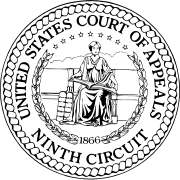Class action suit against the Vatican Bank and others
| Alperin v. Vatican Bank | |
|---|---|
 |
|
| Court | United States Court of Appeals for the Ninth Circuit |
| Full case name | Alperin, et al. v. Vatican Bank |
| Citation(s) | 104 F.3d 1086 (9th Cir. 1997), 284 F.3d 1114 (9th Cir. 2002), 266 F.3d 1155 (9th Cir. 2001), 332 F.3d 679 (D.C. Cir. 2003) |
| Transcript(s) | [5] |
| Keywords | |
| Holocaust survivors, political question | |
Alperin v. Vatican Bank was an unsuccessful class action suit by Holocaust survivors brought against the Vatican Bank ("Institute for the Works of Religion" or "IOR") and the Franciscan Order ("Order of Friars Minor") filed in San Francisco, California on November 15, 1999. The case was initially dismissed as a political question by the District Court for the Northern District of California in 2003, but was reinstated in part by the Court of Appeals for the Ninth Circuit in 2005. That ruling attracted attention as a precedent at the intersection of the Alien Tort Claims Act (ATCA) and the Foreign Sovereign Immunities Act (FSIA).
Part of the complaint against the IOR was dismissed in 2007 on the basis of sovereign immunity, and the remainder of the claim against that defendant was dismissed on the ground that the property claim had no nexus to the United States, a decision confirmed in February 2010 by the Ninth Circuit. The case against the Franciscan Order, who by then were the sole defendants, ended in March 2011 when the Ninth Circuit affirmed the district court's judgment dismissing the claim, and the case was not appealed further. No part of the claim, therefore, ever came to trial and none of the plaintiffs' allegations of fact were ever established in Court.
The factual background as alleged in the claim was that Ustaše hiding in the Pontifical Croatian College of St. Jerome (the Croatian Seminary near the Vatican) brought a large amount of looted gold with them and that it was later moved to other Vatican extraterritorial property and/or the Vatican Bank. Although this gold would be worth hundreds of thousands of 2008 US dollars, it allegedly constituted only a small percentage of the gold looted during World War II, mostly by the Nazis. According to Phayer, "top Vatican personnel would have known the whereabouts of the gold", but he gives no evidence that they did, nor does he name any.
...
Wikipedia
